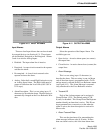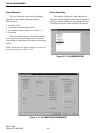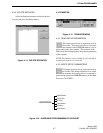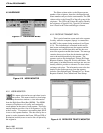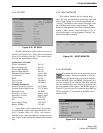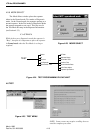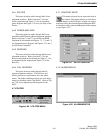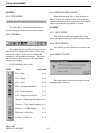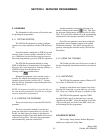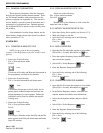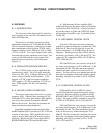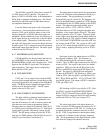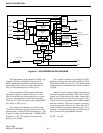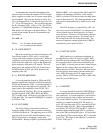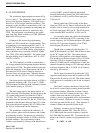
5-1
March 1999
Part No. 001-2009-600
SECTION 5 REPEATER PROGRAMMING
5.1 OVERVIEW
The information in this section will assist the user
in operating the programmer.
5.1.1 GETTING STARTED
The LTR-Net Programmer is used to configure
repeaters for proper operation with the LTR-Net proto-
col.
From the repeater standpoint, an LTR-Net system
consists of one or more repeaters installed in a Local-
ity, a 3000 Series Switch and the necessary intercon-
nects and programming to provide LTR-Net operation.
The LTR-Net Programmer defaults to using
CIM1 at 9600 baud to communicate with a repeater.
However, this can be changed by selecting Utilities ->
COM Port Setup from the menu or by
clicking on the toolbar button.
When the programmer is first started, create a
Locality file with the information to program into
repeaters at that Locality (see How Do I ... Create a
new Site File for information on performing this func-
tion, Section 5.3.1).
NOTE: All repeaters installed in a given Locality use
the same Locality information, but each has its unique
repeater information programmed.
5.1.2 STARTING THE PROGRAM
There are several ways to start the LTR-Net Pro-
grammer.
The most convenient method to start the pro-
gram, pre-loads all the repeater data for a Locality. To
do this, use the Explorer to change to the directory
containing the Locality Files, then double-click on one
of those Locality Files. This starts the programmer
and automatically loads the selected file.
Another method of starting the program is by
double-clicking on the shortcut icon. This starts
the program with an empty information file (Locality
File). A Locality File contains all of the programming
information for all repeaters installed at a Locality.
Once files are opened or saved from within the
programmer, those filenames appear in the taskbar
Documents selection. This allows starting the pro-
gram by selecting the desired Locality File from the
Start Menu.
5.1.3 USING THE TOOLBAR
The Toolbar provides one-click access to some of
the most frequently used menu selections (see Section
4.8.2).
5.1.4 LIMITATIONS
The LTR-Net Programmer requires Windows NT
4.0 or later, or Windows 95 or later.
In order to read data from a repeater, first load a
Locality File from disk, or create and save a Locality
File. Only one LOcality File may be loaded at a time.
The LTR-Net Programmer supports COM1
through COM4, and all of the baud rates currently
supported by the MPC. Since the number of data bits,
stop bits, and parity are fixed in the MPC, these can-
not be changed in the programmer.
5.2 LOCALITY SETUP
The Locality Setup window Defines Repeaters
and Sets up Adjacent Locality Data.



